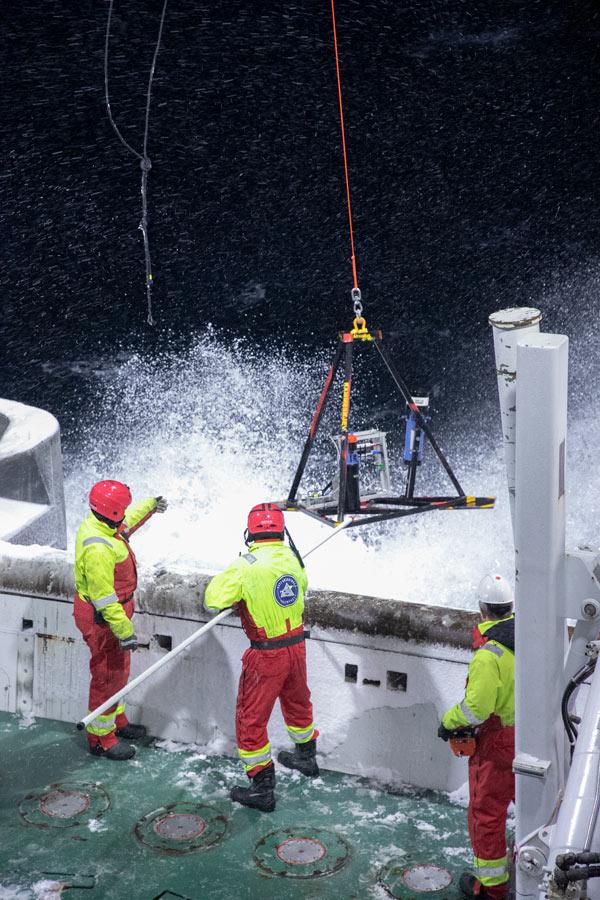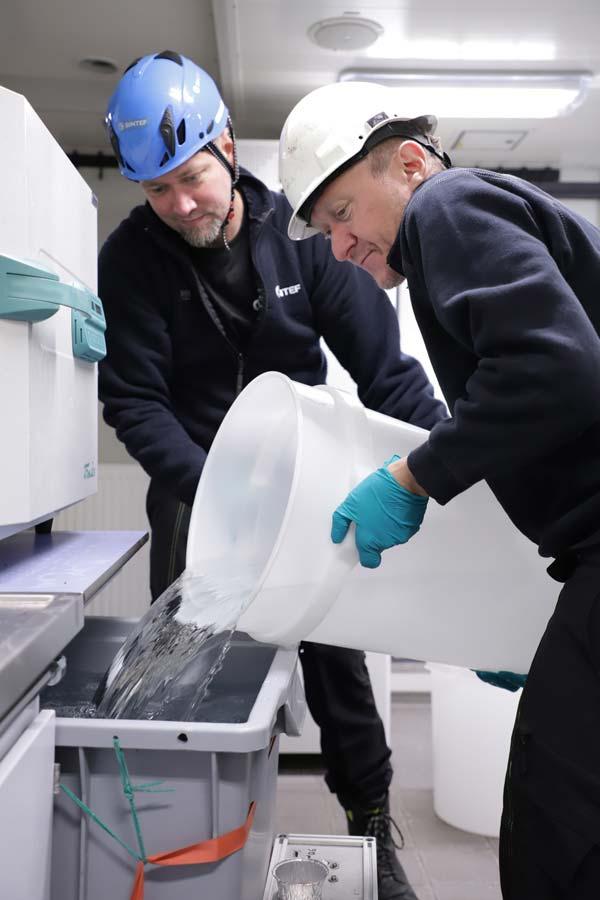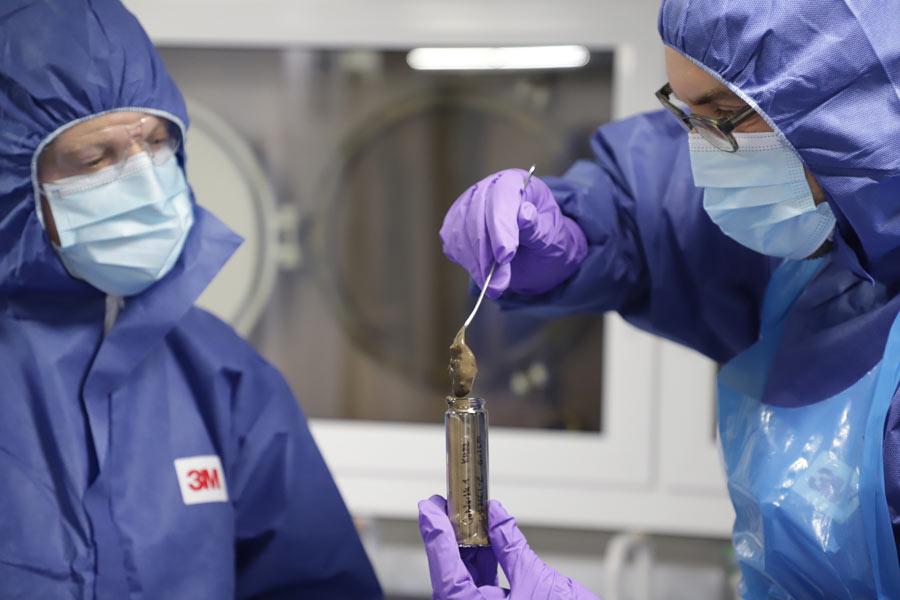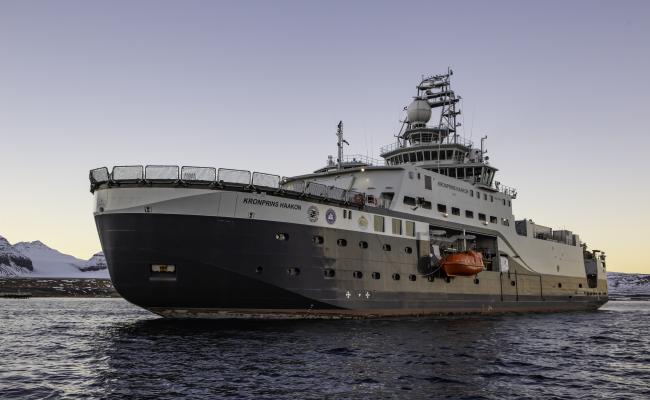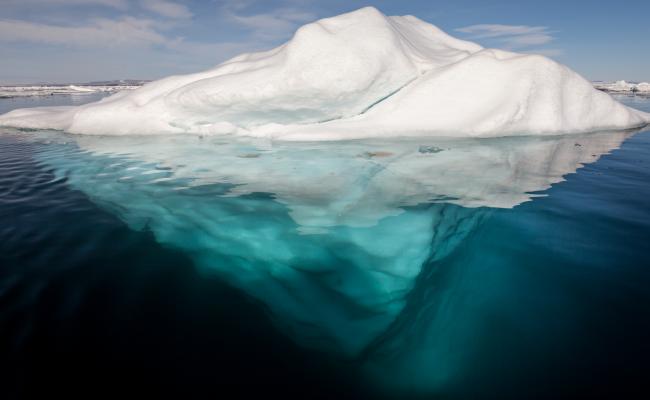The Polar Voyage GoNorth: Departing the Arctic Ocean Loaded With Unique Data
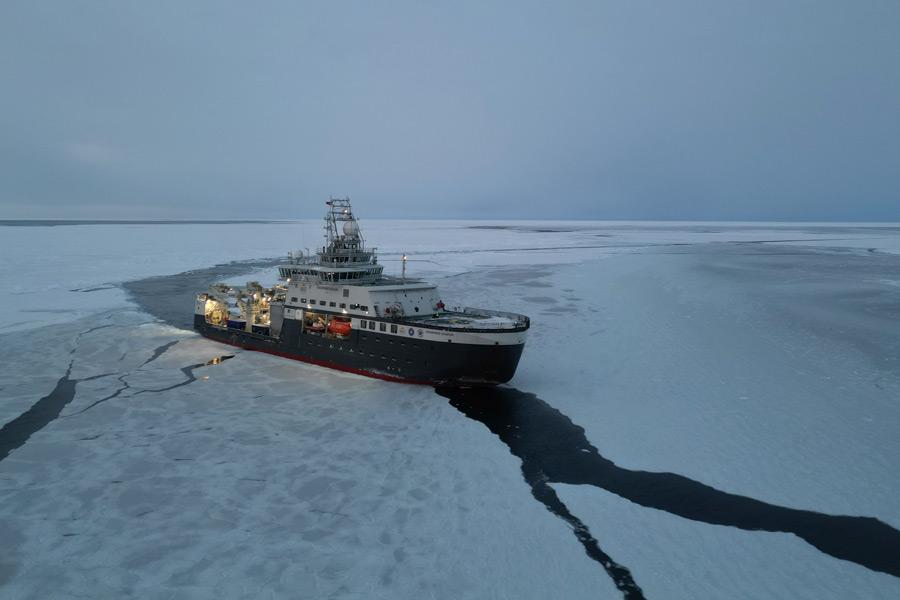
The icebreaker FF "Kronprins Haakon" left Longyearbyen for the first GoNorth voyage on the 15th of October. (Photo: Daniel Albert/Sintef)
The first phase of the polar voyage GoNorth has concluded, and Norway has become a little better acquainted with its Arctic backyard. "Seismic inspections were made in areas we previously knew very little about. In addition, data was collected on everything from life in the Arctic Ocean via long-distance pollution to the past and present sea ice," says Sintef Researcher Daniel Albert.
With Norway's first icebreaker as the base, the polar expedition GoNorth headed north from Svalbard on the 15th of October after years of planning. On board were 35 researchers, technicians, and students, all working to increase knowledge of Norway's northernmost waters.
The expedition followed the UN's Commission on the Limits of the Continental Shelf, which in 2009 supported Norway's demand for an extended shelf in the North. Ice and challenging conditions have made it difficult to collect data north of Svalbard, the new shelf has therefore been unexplored and the knowledge of it inadequate. Until now.
Now, the first part of the icebreaker FF "Kronprins Haakon's" polar voyage has concluded and the data collected will be analyzed by researchers in years to come.
"We now have a better data foundation than ever to say where the border of the European continental crust is located in the Arctic," says Researcher Alexander Minakov at the University in Oslo (UiO), who is one of the voyage's deputy leaders.
He adds that more answers will come when the data has been analyzed.
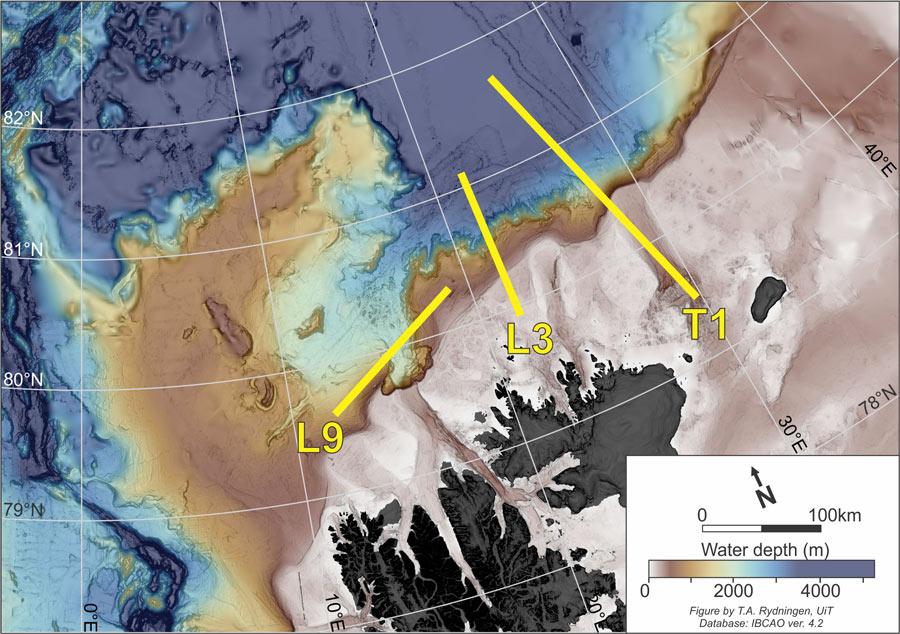
FF "Kronprins Haakon" carried out seismic inspections along these three lines. Along the T1 line, refraction seismic was used, which is a time-consuming process. First, seismic receivers are placed on the seabed along the line. Then, the ship sails along the line while an air gun sends sound and pressure waves to the seabed. (Map: GoNorth)
Seismic surveys
Parts of the data collection have been done through seismic surveys. Seismic waves travel far below the seabed and the echoes that follow are registered by the seismic receivers on board the ship. After that, the ship must sail along the line again to collect the receivers since they cannot send data from the seabed.
The researchers report that it has been especially difficult to complete the tasks in the Nansen basin, where surface ice could ruin the air guns. And at depths of over 4000 meters, there is a higher risk of losing the receivers. A remote-controlled underwater vessel - "Ægir 6000" - from the University of Bergen (UiB) was used to place and retrieve several of the receivers.
"This operation took a longer time, but the results are worth the effort. Seismic refraction (used to characterize the geological structure by registering the wave velocity, ed.note) provides information about the entire earth's crust down to the mantle," writes Daniel Albert at Sintef.
All participants have put in a great effort for their own and others' projects.
Along lines L3 and L9 on the map, seismic reflection was used. This process is easier: both the air guns and the receivers are towed by a cable behind the ship. The information retrieved has better resolution than with seismic refraction, but does not go as deep below the surface.
Seismic surveys demand a lot of work and researchers and engineers from a number of institutions contributed during the voyage: UiO, UiB, UiT the Arctic University of Norway, and the Geological Survey of Denmark and Greenland (Geus). After the voyage, the data will be analyzed by the same institutions, as well as Norsar.
At the same time, the data will provide the foundation for the education of future polar researchers in the field. Two fellows from UiT and one from UiO who also were a part of the voyage, will be closely involved with the analysis.
Biological mapping
Akvaplan-niva sent a researcher and an engineer on the voyage to collect information about what lives in the seabed sediments, in the water column above, and in the ice. In addition to collecting sediment, water, and ice samples, the two researchers used high-tech solutions for data collection.
For example, a lander equipped with oceanographic and biological sensors was lowered down onto the seabed at the beginning of the voyage and collected data for two weeks. An ocean glider also traveled along the T1 line (see map). This is a torpedo-shaped, autonomous underwater drone, also equipped with a variety of sensors.
From Sintef, Frode Leirvik and Thor-Arne Pettersen were aboard to work on a project checking for pollution in the Arctic in the form of traces of medicinal products and products for personal care in the ocean. The two collected water samples at 14 different locations and depths – 600 liters each time. They filtered the water and ran it through a device that collects all traces of medicinal products.
In addition, plankton and sediments collected will also be analyzed for the same products.
Clues from the past
Two researchers from Norce were aboard with an aim of using ancient DNA to form a picture of the past's sea ice. The first step in the project was to establish a database of sediment DNA from a number of places with various ice conditions. During the voyage, Jon Hestetun and Stijn De Schepper from Norce collected samples from ten different locations.
Three fellows and one postdoctoral fellow from the Norwegian University of Science and Technology (NTNU) were on board to work on their projects. Vegard Hornnes and Evgenii Salganik took two trips on the ice to measure the sea ice's thickness, density, salt content, and mechanical strength.
"These measurements will be used as a basis for simulations that will help us calculate the risk of icebergs and the sea ice in the southwestern Barents Sea," writes Albert.
Also part of the voyage was research fellow Nabil Panchi, who works on automated systems that can interpret images of sea ice taken by passing ships. He collected thousands of sea ice images during the voyage. Another fellow, Paul Rübsamen-von Döhren, was not as lucky. He was part of the voyage to investigate a phenomenon called marine icing - when sea spray freezes onto ships or structures.
Unfortunately, the weather conditions were such that there was no marine icing to be observed during the voyage.
An enormous organizational task
The leader of the voyage was Jan Sverre Laberg from UiT. He has worked on the planning for months and has been up during all hours of the day while on the voyage. It is expensive to rent a research vessel and to avoid any downtime, he had to plan more activities than what was possible to carry out, in order to be protected if circumstances such as bad weather or equipment problems lead to cancellations.
The result is that not everyone on board has been able to do what was planned, but all participating institutions did receive some data to work on. In addition, has everyone gained new experience by participating in an interdisciplinary voyage, an experience which will be of great use in the planning of the next GoNorth voyages.
"All participants have put in a great effort for their own and others' projects. In addition, we have seen a great attitude from everyone who worked onboard, which has led to great satisfaction with the results from the first part of the GoNorth voyage," says voyage leader Jan Sverre Laberg.
"The first phase of the voyage, which explored the area north of Svalbard and the Nansen basin, is now completed. The other part will take place at the Knipovich ridge, west of Svalbard. Several dives with the ROV "Ægir 6000" are planned to map what kind of minerals are located in the area," concludes researcher Daniel Albert at Sintef.


